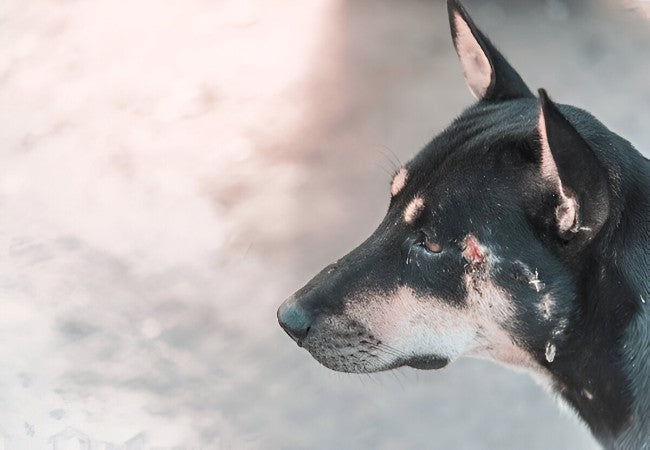Veterinary Guide to Canine Hyperthyroidism 2025 🩺🐶

In this article
Veterinary Guide to Canine Hyperthyroidism 2025 🩺🐶
By Dr. Duncan Houston BVSc
🧬 What Is Hyperthyroidism?
Canine hyperthyroidism, characterized by excessive thyroid hormone production (T₃ and T₄), is rare but serious. Unlike hypothyroidism, this condition often stems from thyroid carcinoma or external sources like dietary thyroid tissue or medication overdose.
👥 Who’s Affected?
- Older dogs (typically >7 years), especially breeds with higher thyroid tumor rates: Beagles, Boxers, Golden Retrievers, and Siberian Huskies.
- Raw-fed dogs or those consuming offal treats may develop dietary hyperthyroidism.
- Overmedicated hypothyroid dogs—excessive levothyroxine dosing can induce iatrogenic hyperthyroidism.
👀 Symptoms to Watch For
Hyperthyroid dogs show a hypermetabolic state and often mimic other endocrine or cardiac conditions:
- Weight loss despite increased appetite 🦴
- Polyuria/polydipsia (thirst & urination) 💧
- Hyperactivity, restlessness, increased vocalization 🔊
- Gastrointestinal upset: vomiting, diarrhea, gagging
- Cardiac signs: tachycardia, murmurs, cardiomegaly, dyspnea, congestive heart failure
- Palpable mass near the thyroid on neck exam; changes in bark or swallowing difficulty
🔬 Diagnosis Workflow
- Physical exam: Palpate neck for thyroid mass, check heart rate and coat quality.
- Blood tests: Elevated total/free T₄ and T₃ confirm hyperthyroidism; check for iatrogenic levels.
- Urinalysis: Rule out other causes of thirst/urination – expect normal results in pure hyperthyroidism.
- Neck ultrasound: Localize thyroid mass and assess features; helps surgical planning.
- Thoracic imaging: Chest radiograph or echo to rule out ectopic thyroid tissue or cardiac involvement.
- Scintigraphy/CT/MRI: Reserved for surgical planning or metastatic staging.
- Diet/medication history: Raw diet/offal intake or over-supplementation must be explored.
🧠 Causes of Canine Hyperthyroidism
- Thyroid carcinoma/malignant tumor: most common cause in dogs—usually invasive with potential metastasis.
- Dietary hyperthyroidism: Raw/offal diets or jerky treats containing thyroid tissue.
- Iatrogenic: Overdose of levothyroxine in hypothyroid dogs or coprophagia-driven ingestion.
- Benign adenomas: Rare but possible—often indistinguishable until imaging or mass detection.
🛠️ Treatment Options
🔹 Malignant or Benign Tumors
- Surgical thyroidectomy: Preferred when mass is small (<4 cm), mobile, and non-invasive—offers best prognosis.
- Non-surgical ablation/radiation: For inoperable or ectopic masses.
- Medical therapy: Limited—beta-blockers for cardiac signs can be used, but euthanasia is often required if mass is metastatic.
🔹 Dietary/Overdose Cases
- Remove dietary source: Discontinue raw/offal diets; repeat thyroid levels in 4 weeks—some dogs normalize naturally.
- Adjust levothyroxine: Reduce dosage and monitor levels; signs typically improve within weeks.
⌛ Prognosis & Monitoring
- Tumors: Prognosis depends on size, invasiveness, metastasis—surgery can yield months to years of quality life.
- Dietary/iatrogenic: Excellent recovery expected—levels normalize quickly after intervention.
- Monitoring: Recheck thyroid levels at 4, 8, 12 weeks post-intervention; then every 6 months based on response.
🏠 At‑Home Care & Lifestyle
- Feed prescribed diet only; avoid raw/offal treats.
- Watch weight; adjust diet/calories accordingly.
- Provide calm environment for hyperactive dogs; rest areas for cardiac support.
- Monitor heart rate, water intake, urination frequency, and GI signs.
- Administer medications as prescribed, including beta-blockers or thyroid replacements.
📱 Ask A Vet Telehealth Support
- Remote consults: Upload symptoms, lab results, or images of neck lumps for vet analysis.
- *** Ask A Vet provides dosage reminders, appointment alerts, dietary coaching, and monitoring guidance during recovery.***
🎓 Case Spotlight: “Max” the Golden Retriever
Max, a 10‑year‑old retriever, had sudden weight loss and persistent hunger. We palpated a thyroid mass, and bloodwork confirmed high T₄. Ultrasound revealed a 3 cm mobile tumor. He had surgery, showed marked improvement in appetite, stabilized weight, and cardiac function. With Ask A Vet’s medication reminders and remote check‑ins, Max continues thriving a year later! 🐾❤️
🔚 Key Takeaways
- Hyperthyroidism in dogs is rare but often tumor‑driven.
- Raw diets or overmedication can mimic the disease; history is key.
- Diagnosis via bloodwork, palpation, imaging; management varies by cause.
- Surgery offers the best outcome for tumors; dietary/intervention cases respond well.
- Ask A Vet supports diagnostics, treatment monitoring, and owner guidance remotely. 🩺📲
Dr Duncan Houston BVSc, founder of Ask A Vet. Download the Ask A Vet app now for expert hyperthyroidism support—from lab tracking to surgical follow-up! 🐶💡






